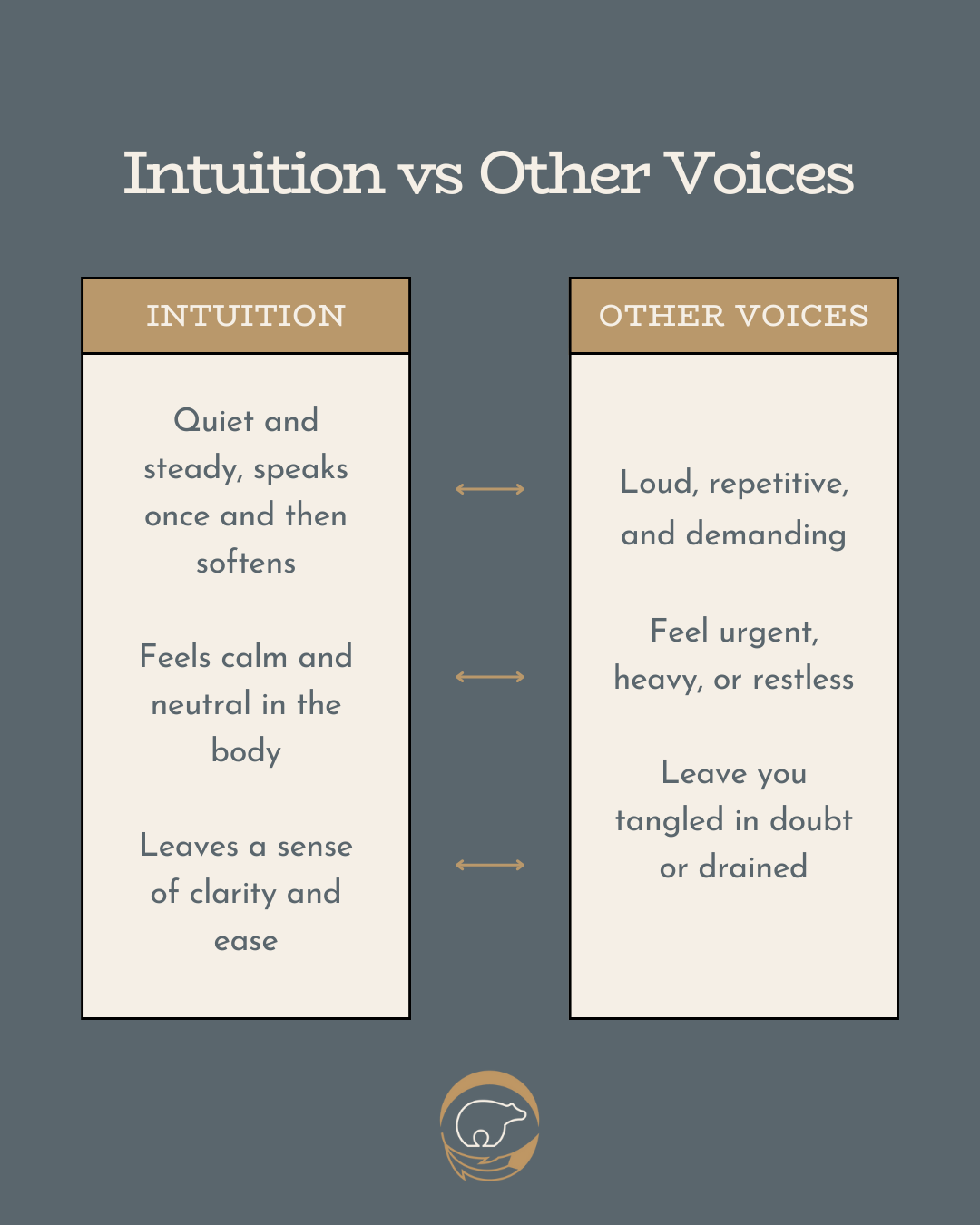Have you ever had a moment where you just knew something without being able to explain why?
Maybe it was a quiet nudge to call a friend, or a sudden sense that a choice was right for you before you had the facts to back it up. That’s the mysterious pull of intuition.
Intuition doesn’t always arrive with fireworks or certainty. But, more often, it comes as a whisper, a subtle shift in your body, or a calm knowing that doesn’t need to be argued with. The tricky part is that it can feel different for each of us, and learning to recognize it is like learning the rhythm of your own inner language.
So, what does intuition actually feel like? Let’s begin by exploring the many ways it can show up in your everyday life.
What Does Intuition Feel Like?
Intuition rarely looks the same for everyone.
For some, it arrives as a wave of calm - a quiet certainty that settles in without needing proof. For others, it’s a sudden spark of clarity, like a light flicking on in a dark room. You might notice it as a gentle pull toward something that feels aligned, or an inner resistance that tells you to pause.
Many people describe it as a knowing without knowing why; a sense that doesn’t demand explanation, but simply asks to be trusted.
What Does Intuition Feel Like in the Body?
Our intuition often speaks through the body long before the mind catches up.
You might feel a sudden lightness in your chest when something is right, or a heaviness in your stomach when something is off. Some describe it as warmth that spreads through the heart, while others notice goosebumps or a subtle shiver when they touch upon truth.
These signals aren’t always dramatic, they’re often subtle and fleeting. The challenge is slowing down enough to notice them. Intuition uses the language of sensation, and the more we pay attention to our body’s responses, the clearer that language becomes.
Common Bodily Signals of Intuition
- A calm openness in your chest or heart when you’re aligned with a decision
- A tight knot or heaviness in your stomach when something doesn’t feel right
- Goosebumps or tingles when you hear words that deeply resonate
- A gentle pull or expansion that feels like being drawn toward something
Learning your body’s cues is a personal journey. For some, intuition lives in the gut; for others, it’s in the heart or even in the skin’s subtle reactions. Over time, these sensations become familiar guideposts, showing you how your inner wisdom speaks uniquely to you.
How Do You Tell It’s Your Intuition?
One of the greatest challenges in tuning into intuition is learning to recognize it without getting lost in the noise of other inner voices.
Because intuition is subtle, it’s easy to confuse it with thoughts, fears, or even wishful thinking. But intuition has its own quality; it feels steady, simple, and neutral.
You can think of it as a quiet knowing that doesn’t need to persuade or argue. Intuition shows up quickly and clearly, and then it softens. Meanwhile, the mind often keeps running in circles, trying to prove, disprove, or dissect the message.
Intuition vs. Other Inner Voices
- Intuition feels calm, grounded, and matter-of-fact. It offers a sense of clarity without pressure.
- Fear feels urgent, heavy, or tight. It usually carries a survival instinct and pushes you to act quickly.
- Desire or ego can feel thrilling or inflated, but it often comes with attachment to outcome or external validation.
- Overthinking feels repetitive, restless, and exhausting, like a voice that never quite settles.

A simple way to tell is by noticing how you feel afterward. Intuition tends to leave a trail of peace or quiet certainty, even if the path it points to isn’t easy. The other voices usually leave you feeling tangled, drained, or unsettled.
Examples of Intuitive Feelings
Sometimes the best way to understand intuition is to notice it in the small, ordinary moments of life. These flashes of inner knowing often happen quietly, but they leave a mark that feels unmistakable once you reflect on them.
You might think of a friend out of the blue and feel a gentle nudge to reach out, only to find they needed support that very day. Or perhaps you’ve felt an unexpected sense of resistance before taking a certain road, and later discovered there was an accident or delay you avoided.
Intuition also shows up in choices that shape our path more deeply. You might feel inexplicably drawn to a new opportunity, place, or person, even when it doesn’t “make sense” on paper. Over time, you realize that inner pull was guiding you exactly where you needed to be.
There are also the subtler everyday cues: goosebumps when someone speaks a truth your soul recognizes, a wave of calm the moment you make a decision that’s right for you, or a quiet inner “no” that holds steady even when others disagree.
These are just glimpses, but they show how intuition can weave itself through both the small and significant moments of our lives. The more you pause to notice them, the more clearly you’ll recognize your own intuitive language.
The Quiet Gift of Trusting Yourself
Finding your intuition is less about chasing answers and more about remembering how to listen.
The beauty is that intuition belongs to all of us. It’s not a gift for a select few but a natural part of being human, like an inner compass guiding us home. The more you give space to notice it - in your body, in your choices, in the small whispers of everyday life - the stronger and clearer it becomes.
In the end, intuition is a relationship. It grows when you trust it, when you honor the subtle ways it shows up, and when you allow yourself to follow its lead with curiosity.









